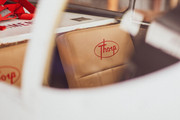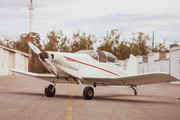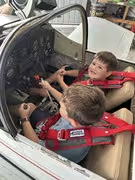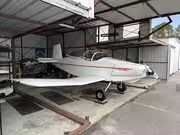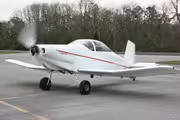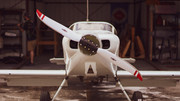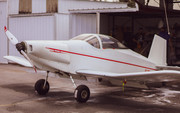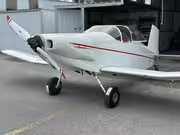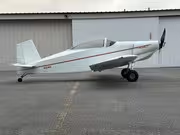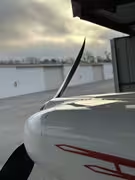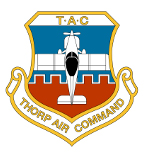Hello All!
Long time no update. We purchased N12WK in July of 2020, I excitedly made a post, and subsequently forgot about the forum. This makes my job harder now, as I will attempt to faithfully recreate the restoration process with as many quality photos as practical.
From the logs, records, and internet searches, I have found that I am the fourth owner of this airplane. It was built in California by Miller Yoder, moved to Sedona Arizona, and in 2006 he sold his hangar and the aircraft came along as part of the sale. The buyer could not or would not learn to fly tailwheels so he flipped the Thorp via an eBay Motors advertisement. The auction was won by my EAA chapter-mate Harold, who flew it home and tucked it away in his hangar. While in his care, the avionics were updated and minor comfort modifications were carried out, like raising the height of the seat and adding fresh air vents in the cockpit. But an unfortunate car accident prevented him from using the smaller airplane, so it began to gather a healthy layer of dust until I came along.
When we stumbled across the Thorp, our cursory inspection told us it needed work. It was gorgeous and I was smitten, but it had sat for a number of years. The price was right so I paid the man and taxied it home. Originally sold with a fresh inspection, the starter failed about a month after the purchase of the airplane. Of course, this is to be anticipated with an older airplane and an even older starter motor, so we quickly replaced the starter with a light-weight Skytec. Engine exhaust hardware and springs were noted to have surface corrosion so they were removed, stripped and painted with high temp exhaust paint. A tail-beacon was installed in place of the standard glass dome on the rudder, and around this time the fuel valve began to leak, so we drained the tank, removed, cleaned, and lubricated the valve before reinstallation. I moved to Lakeland to temporarily work at the Florida Air Museum around this time in the project, so we hired a mechanic to help us out to maximize our impact when I made the drive over to the hangar. We replaced all of our fuel lines forward of the firewall since they were crusty, and while we were at it replaced the rocker cover gaskets. The vacuum system was not functional so we removed the pump to find the spline was sheared off, which necessitated a rebuilt Rapco vacuum pump (for now, at least).
Our prop was a Hartzell constant speed and it had all of 16 hours on a rebuild when the Thorp ceased flying. However, it was on a reoccurring time-based AD that necessitated removal and overhaul, So we elected to go with a Sensenich composite ground-adjustable propeller after discussing it with a friend in Lakeland. It was a little more expensive than the service (assuming all was well...) but it lightened the airplane by a considerable figure and removed the need for costly routine servicing entirely. With the prop change we shed the governor and lines, plugged the crank, and followed the Lycoming service bulletin pertaining to a change from constant to fixed-pitched props. Ordering the prop with Sensenich was as easy as could be and their customer service has been second to none when fielding many of my amateur-level questions.
We noticed that our battery was not holding a charge for more than a day or so, and upon closer inspection it was old enough to vote. So we ditched it for a new, lighter Gill battery that someone at the airport had lying around. Certainly not the lightest option around, but we have had no complaints so far with holding a charge. After changing the battery, we tested our transponder and found out that it was not functional. The radio worked (poorly), but it was ancient and had a damaged face plate. We were able to purchase a Garmin GTX327 for a great price from a Hangar neighbor, and then sourced a matching new Garmin GTR200 at AirVenture. We found our ELT was not hooked up to an antenna on the aircraft, so we added one instead of relying on the integrated extendable antenna. While messing around with the interior, we had our original seats recovered in tan leather and had the Thorp logo embroidered in red on the seat backs, and ordered red hooker harnesses to replace the original fraying seatbelts at Sun 'n Fun. The seat work was done by Hoover's Interiors here at Hidden Lake Airport.
Around November of 2023, we were getting ready for ground runs. Out the airplane came, only to realize that the carburetor was not enjoying the prospect of coming out of its retirement. The fuel adjustments were able to make it run well at idle, or at power.. but not both. We replaced the carb with a new Marvel Schebler unit and were rewarded with perfect operation across the throttle range. With this completed, we buttoned everything up and carried out the leak check on the airplane. Finally, the tires and tires from 2004 were replaced and the Thorp was signed off with a condition inspection (for real this time!). I had the pleasure of inviting Bob Highley out to look at the airplane, and I think I got his stamp of approval. The airplane came with most of the modifications listed in the newsletters, but he recommended I remove the tail to inspect the tailwheel attach plate. This will be completed before first flight, along with the installation of the longer tailwheel assembly that came off of Les Conwell's former airplane.
Currently, I am working with Tampa FSDO to get my flight test box approved, and am working on getting insurance. I was able to get the aircraft weighed this week, and surprisingly it is still within balance, even with all the modifications. It weighs 926 empty, which is without wheel pants and spinner. In a recent development, I recently got into touch with the original builder's daughter, and she has tons of pictures of 12WK being built and flown by her dad. She has agreed to sit down to a virtual interview and I am tickled to find out more about not only the airplane but about the guy who built her as well.
Im sure I glossed over details, but I would be happy to answer questions or clarify things if I was unclear!
Glenn
N12WK
